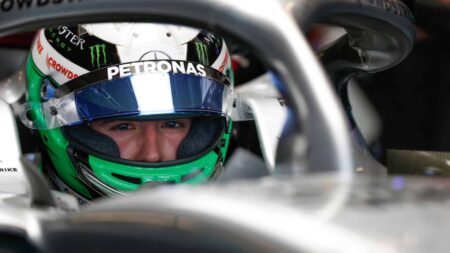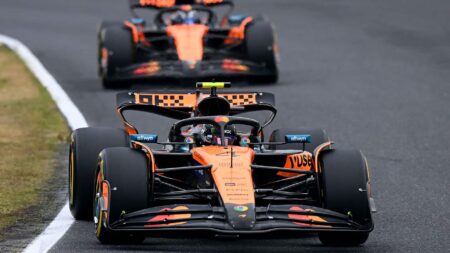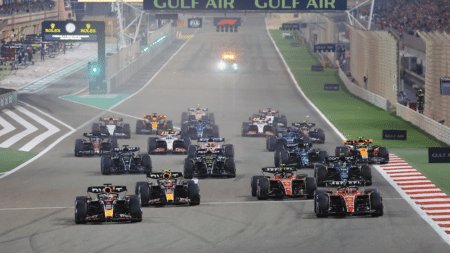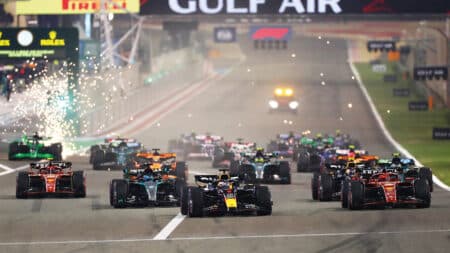
Who are all the F1 rookies driving in Bahrain GP FP1?
The Bahrain Grand Prix is set to have a very different line-up during first Friday practice as six rookies replace F1 drivers at their parent teams. Here's all you need to know about them
It is, I know, a little early in the season to be making predictions. I know too that the lap times recorded in Jerez were at best meaningless and, at worst, entirely misleading to anyone naïve enough to set any store by them.

McLaren rookie Kevin Magnussen set the fastest time in Jerez
I know also that this year’s F1 cars are the ugliest on record and, far worse for the sport, they are also the most lampooned. I read also that global viewing figures for F1 headed sharply downhill season in 2013 and not only because of the unanswerable combination of Adrian Newey and Sebastian Vettel.
Yet as we head towards Melbourne I find myself looking forward to the start of an F1 season more than I have for many years, something I’d not have considered saying before Jerez. So despite the irrelevance of the times there was indeed much to be learned from the test.
First and most obviously, the reliability issues predicted by Martin Brundle in this space a few weeks back have come true. This year the rules have been shaken up to a greater extent than any since the introduction of the 3-litre formula in 1966 and despite being given fair notice, even the best have been caught out.
The entire Red Bull team completed fewer laps in four days of testing in Jerez than either one of its drivers could expect to complete in half an hour’s normal racing at a typical F1 circuit. So not only has a huge variable been introduced, right now it seems the team that through its own excellence did so much to make 2013 so boring may be the one likely to suffer most as a result.
Secondly the cars sound really good. It’s hard to believe that a turbocharged 1.6-litre V6 motors could sound better than a normally aspirated 2.4-litre V8s, but they do. With their flat plane cranks the V8s all sounded like four cylinder motors and screamed at too high a pitch for individual sounds within the noise to be distinguished.
But the V6s not only sound like V6s, their notes are complex, interesting and able to be broken down into various sound sources: you can for instance really hear the turbo spooling up and down.
But the real reason I’m now going to set my alarm for the middle of the night to watch first practice in Melbourne is to seek the return of something that’s not really been a component of F1 since ground effect took it away in the late 1970s. I refer of course to oversteer.
At Jerez they were slithering and sliding all over the place and it doesn’t take much to work out why: the additional torque of the new powertrains coupled with a reduction in downforce and Pirelli tyres believed to be far more tolerant of a good old fashioned slip angle means the art of opposite lock may be about the make something of a comeback.
For the avoidance of doubt I don’t think 2014 F1 cars are going to start drifting like a grid-full of Lotus 72s, but it may provide some moments of visual spectacle than more than make up for the less than prepossessing styling of this year’s cars.
Lewis on a qualifier with a sniff of pole should be something special, as should be the sight of anyone trying to drive one of these fiendishly complex new devices when it’s raining.
Having sat out the entire winter in a state of almost complete indifference about the 2014 Formula 1 season, I now find myself feeling something closer to high excitement. Best of all, having convinced myself the outcome of the 2014 world championship was already known, now I really have no idea at all. But I might just go and put a few quid on Lewis all the same.

The Bahrain Grand Prix is set to have a very different line-up during first Friday practice as six rookies replace F1 drivers at their parent teams. Here's all you need to know about them

Lando Norris leads Max Verstappen by a single point going into the fourth round of the season in the Bahrain GP following the Red Bull driver's win in Japan. Here's what to look out for at Sakhir

Formula 1 heads to Sakhir for the Bahrain Grand Prix this weekend, but which drivers have had the most success at this special circuit before? From the highest number of podiums, pole positions and wins, here are all the stats for you to get stuck into

The 2025 Formula 1 season is set to hot up in Sakhir – watch F1 via live stream or on TV: dates and start time for the 2025 Bahrain Grand Prix